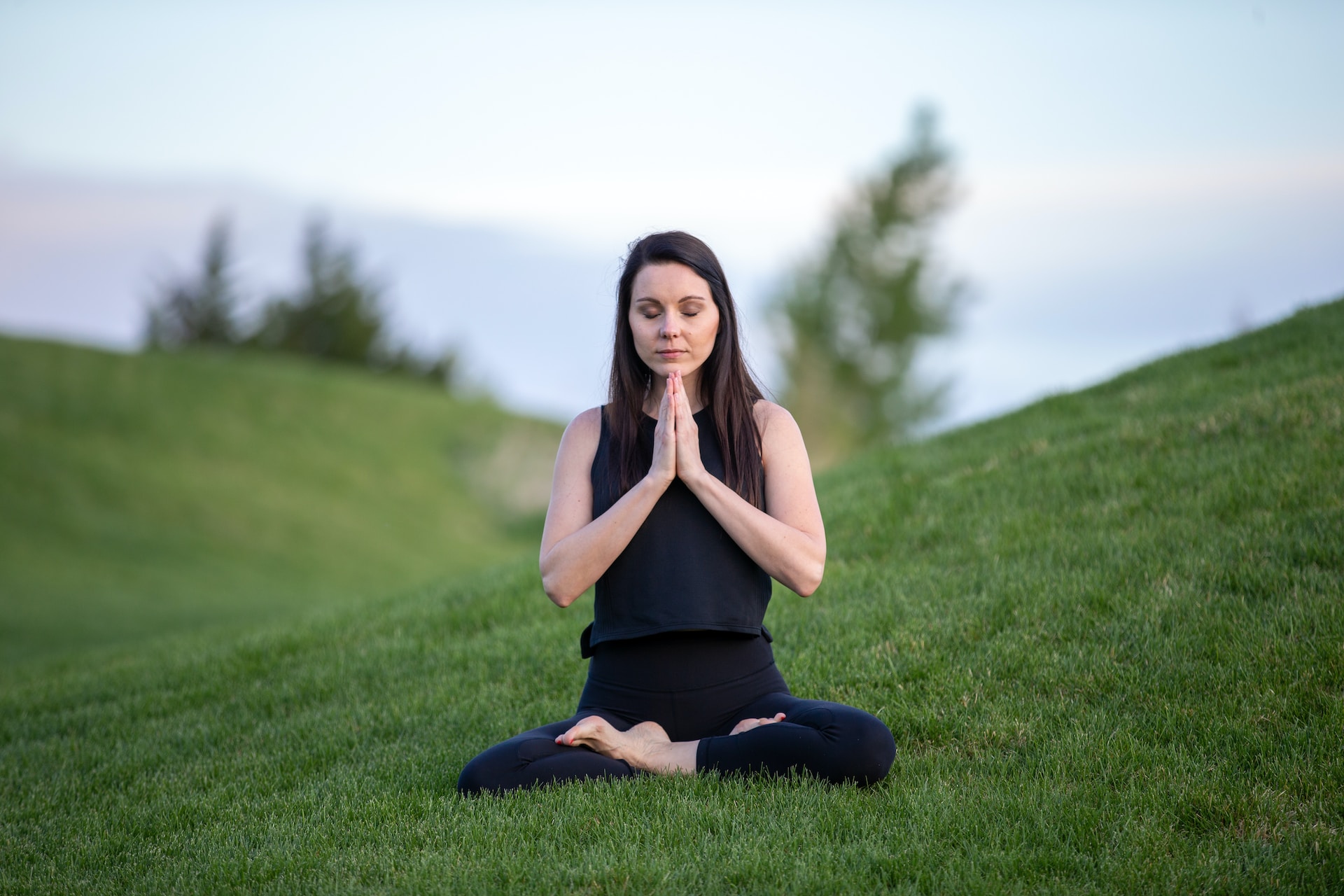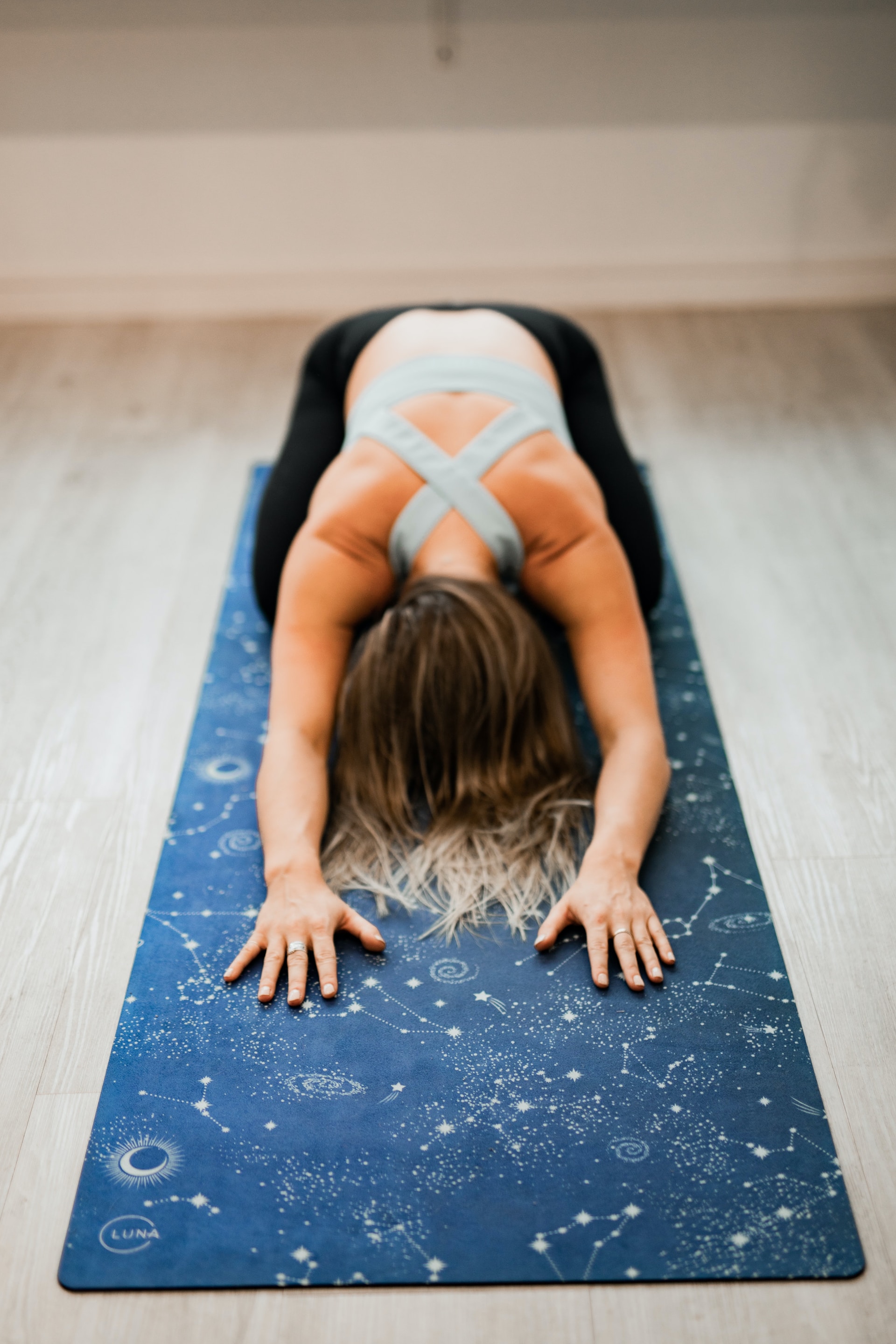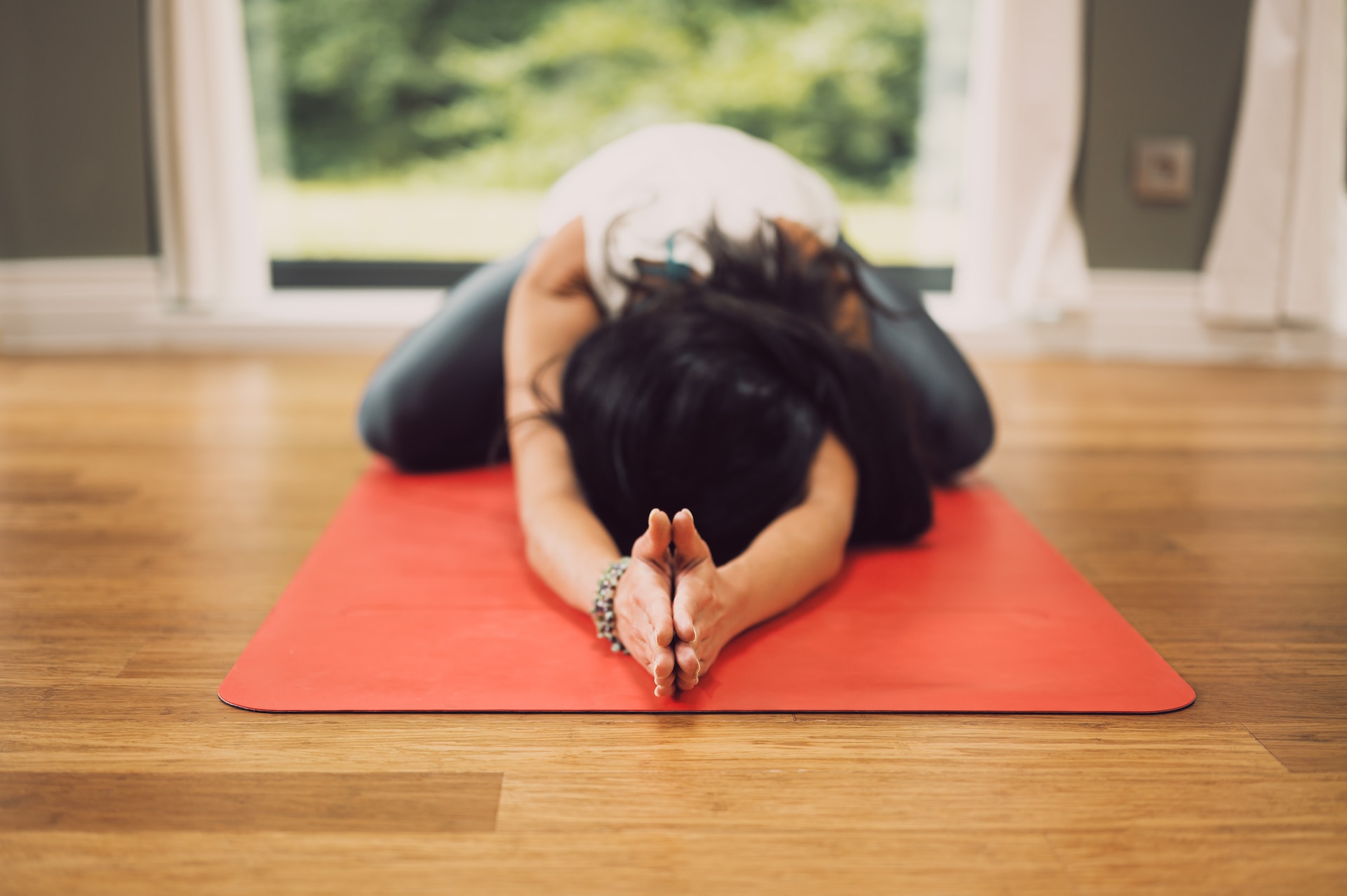Restorative Yoga As A Stress Reduction Technique - A Detailed Overview
In today's fast-paced world, stress has become an inevitable part of our lives. It can take a toll on our physical and mental health, leading to a range of issues from insomnia to anxiety disorders. In this article, we'll explore the benefits of restorative yoga as a stress reduction technique and how it can help you find calm and balance in your daily life.
Author:Suleman ShahReviewer:Han JuMay 01, 20234 Shares415 Views

In today's fast-paced world, stress has become an inevitable part of our lives. It can take a toll on our physical and mental health, leading to a range of issues from insomniato anxiety disorders.
As such, it is essential to find effective ways to manage and reduce stress levels. One technique that has gained popularity in recent years is Restorative Yoga.
This type of yoga focuses on relaxation and rejuvenation, using props like blankets, bolsters, and blocks to support the body in restful postures.
In this article, we'll explore the benefits of restorative yoga as a stress reduction techniqueand how it can help you find calm and balance in your daily life.
The Benefits Of Restorative Yoga
Restorative yoga is a unique style of yoga that creates an ideal environment for the "Rest and Digest" part of your nervous system to activate, promoting a sense of calm and ease in the body. By incorporating restorative yoga into your daily routine, you can experience a multitude of benefits that contribute to your overall well-being.
Regular practice of restorative yoga can help reduce muscle pain, improve digestion, and enhance sleep quality, leading to reduced exhaustion. It can also improve blood flow and heart function, as well as increase the efficiency of the immune system. Furthermore, restorative yoga can help slow down breathing, heart rate, and brain waves, creating a calming effect on both the body and mind.
Moreover, restorative yoga offers an effective way to heal and nurture the mind, body, and soul. By integrating this practice into your daily routine, you can combat the harmful effects of stress that can manifest in the body as anxietyand tension.
It is important to note that stress can have detrimental consequences on the body if not managed effectively. Chronic stress can lead to healthissues such as high blood pressure, cardiovascular disease, and compromised immune function. By incorporating restorative yoga into your routine, you can proactively manage stress and safeguard your health.
Restorative yoga offers a natural and effective way to promote relaxation, reduce stress, and improve overall well-being. By prioritizing self-care and incorporating restorative yoga into your daily routine, you can reap the benefits of this practice and enhance your physical, mental, and emotional health.
The Effects Of Stress On The Human Body
The effects of stress on our daily lives are numerous and can interfere with our routines. Anxiety and worry can manifest in various signs and symptoms that impact our physical and mental health.
Digestive issues such as diarrhea and constipationcan occur, along with skin problems like acne. Chronic pain and exhaustion can leave us feeling constantly fatigued and in need of sleep.
Emotional and mental distress can also arise, leading to mood deterioration and the onset of depression and anxiety. Additionally, chronic stress can increase the likelihood of life-threatening illnesses like cancer and heart disease.
Clearly, subjecting our bodies to such physical and mental strain is not desirable. This is where restorative yoga comes in as a unique form of yoga that sets it apart from other types. It offers a gentle and nurturing approach that allows the body to enter a state of relaxation and ease, providing an effective way to combat the negative effects of stress.
Incorporating restorative yoga into your daily routine can help alleviate the symptoms of stress and promote overall well-being. By taking advantage of the many benefits that restorative yoga offers, you can enhance your physical, mental, and emotional health and lead a more fulfilling life.
The Difference Between Restorative Yoga And Other Yogas
Restorative yoga is not your typical yoga practice. Unlike other forms of yoga that focus on specific exercises, restorative yoga aims to help you relax and enjoy your body while being with yourself. It makes use of sheets, bolsters, supports, and belts to protect your body while in each pose.
With restorative yoga, you don't need to move or do complex poses that will leave you sweating and out of breath. Instead, you can fully relax into the warmth of your props while stimulating your parasympathetic nervous system.
Restorative yoga focuses on muscle relaxation, breathing techniques, and mindfulness. It prioritizes muscle relaxation, which is critical to relieving tension and stress in the body. When you allow yourself to release tension and feel grounded, a sense of calm washes over you, making it an effective tool for stress relief.
By relaxing your Root Chakra, restorative yoga gives you a sense of security that allows you to let go of tension in your body. Restorative yoga can be a great way to relieve stress and promote relaxation, making it an excellent addition to your wellness routine.
Different Yoga Postures That Can Revitalize The Body
I'd like to share three restorative yoga postures that I personally enjoy and find helpful for reducing stress and tension in the body. To perform these poses, you'll need a few props such as pillows, blocks, and blankets to support your body and promote relaxation.
These poses are perfect for when you feel tired or overwhelmed and need to unwind both physically and mentally. It's recommended to hold each pose for a minimum of three minutes to fully experience their benefits.
As you practice these postures, focus on your breath and try to let go of any distracting thoughts or worries. Find a quiet and comfortable space where you can relax without any interruptions, and allow yourself to find inner peace and calmness with the support of your props.
Supported Child's Pose
To begin this restorative yoga pose, ensure that you have all your props within reach. Stand on the ground and bring your big toes together while you sit on your heels. If you feel pressure on your feet, you can tuck a folded blanket between your thighs and calves.
Create space between your thighs and stack pillows and blankets between them to form a gentle platform. Lower your chest towards the props and relax your upper body, allowing yourself to sink into the warmth of the ground and the softness of the props.
Take a deep breath into your back body and gently close your eyes, letting the pose soothe your mind and alleviate any stress or discomfort you might be experiencing. This pose is excellent for stimulating the parasympathetic nervous system's "rest and digest" response, and it can be especially helpful for those recovering from back or neck pain.
Make sure that your body is completely relaxed to avoid agitating your mind and drawing your attention away from relaxation. After allowing your mind and body to continue to calm down, you can move on to the next pose.
Spinal Twist
Lie down on your back with your blanket and pillows nearby. Hug both knees to your chest, then extend your arms out to the sides in a "T" position.
Exhale and drop your knees to the right side, resting them on a prop. Place a comfortable item, like a blanket or pillow, under your feet. Ensure that your knees are flat on the ground and your thighs are shifted to the left for optimal results.
Relax and allow your knees to feel heavy while leaning onto the support of your props. Close your eyes and breathe deeply into the right side of your body. Let go of any tension in your shoulders, hips, and neck, allowing your entire body to relax. Hold the pose for three minutes before switching to the left side with your knees and props.
Twists can help with:
- Improving digestion
- Relieving back pain
- Reducing stress and anxiety
- Detoxifying the body by removing toxins
Make sure you are comfortable and use as many pillows and blankets as necessary to support your body. After completing all sides of the twist, take some final rest.
Supported Final Resting Pose
This final pose is the one everyone looks forward to at the end of a yoga class. It's easy to do, yet it has incredible healing and calming benefits.
I have found this pose particularly helpful in finding calm during the busiest of days.
Lie down on your stomach with your arms by your sides. Make sure you have at least two blankets, a pillow or cushion, and two blocks (or substitutes for blocks) within reach.
Place the cushion under your knees to support them, and put a block or other sturdy prop under each foot. Fold one of the blankets and place it under your ribcage to gently open your neck, and use the other blanket to provide insulation under your shoulders. Let your arms hang by your sides with palms facing up, finding a comfortable position.
Close your eyes and take a deep inhale through your nose, followed by a deep exhale through your mouth. As you begin to relax your body, allow your back, feet, limbs, and legs to feel heavy and sink into the props beneath you. Direct your energy towards the support of your props and the world around you.
This pose offers several benefits, such as:
- Quieting your racing thoughts
- Reducing stress, depression, and anxiety
- Easing fatigue, headaches, and even insomnia
- Lowering blood pressure and improving overall health
People Also Ask
What Is Restorative Yoga Technique?
Restorative Yoga Technique is a type of yoga that is focused on relaxation, calmness, and restoration of the body and mind.
What Props Are Used In Restorative Yoga Technique?
Props such as blankets, blocks, bolsters, straps, and eye pillows are commonly used in Restorative Yoga Technique. They are used to support the body in different poses and promote relaxation.
Who Can Practice Restorative Yoga Technique?
Restorative Yoga Technique is suitable for anyone, regardless of age, fitness level, or yoga experience. It is particularly beneficial for those who are dealing with stress, anxiety, fatigue, or chronic pain.
Conclusion
Restorative yoga as a stress reduction technique offers a holistic approach to managing stress and anxiety. By focusing on relaxation and rejuvenation, restorative yoga helps calm the mind and release tension from the body, promoting a sense of well-being and balance.
Through regular practice, you can learn to manage stress more effectively, improve your sleep quality, and cultivate a deep sense of peace and tranquility in your daily life. So, whether you're new to yoga or an experienced practitioner, consider adding restorative yoga to your self-care routine and experience the many benefits it has to offer.

Suleman Shah
Author
Suleman Shah is a researcher and freelance writer. As a researcher, he has worked with MNS University of Agriculture, Multan (Pakistan) and Texas A & M University (USA). He regularly writes science articles and blogs for science news website immersse.com and open access publishers OA Publishing London and Scientific Times. He loves to keep himself updated on scientific developments and convert these developments into everyday language to update the readers about the developments in the scientific era. His primary research focus is Plant sciences, and he contributed to this field by publishing his research in scientific journals and presenting his work at many Conferences.
Shah graduated from the University of Agriculture Faisalabad (Pakistan) and started his professional carrier with Jaffer Agro Services and later with the Agriculture Department of the Government of Pakistan. His research interest compelled and attracted him to proceed with his carrier in Plant sciences research. So, he started his Ph.D. in Soil Science at MNS University of Agriculture Multan (Pakistan). Later, he started working as a visiting scholar with Texas A&M University (USA).
Shah’s experience with big Open Excess publishers like Springers, Frontiers, MDPI, etc., testified to his belief in Open Access as a barrier-removing mechanism between researchers and the readers of their research. Shah believes that Open Access is revolutionizing the publication process and benefitting research in all fields.

Han Ju
Reviewer
Hello! I'm Han Ju, the heart behind World Wide Journals. My life is a unique tapestry woven from the threads of news, spirituality, and science, enriched by melodies from my guitar. Raised amidst tales of the ancient and the arcane, I developed a keen eye for the stories that truly matter. Through my work, I seek to bridge the seen with the unseen, marrying the rigor of science with the depth of spirituality.
Each article at World Wide Journals is a piece of this ongoing quest, blending analysis with personal reflection. Whether exploring quantum frontiers or strumming chords under the stars, my aim is to inspire and provoke thought, inviting you into a world where every discovery is a note in the grand symphony of existence.
Welcome aboard this journey of insight and exploration, where curiosity leads and music guides.
Latest Articles
Popular Articles

